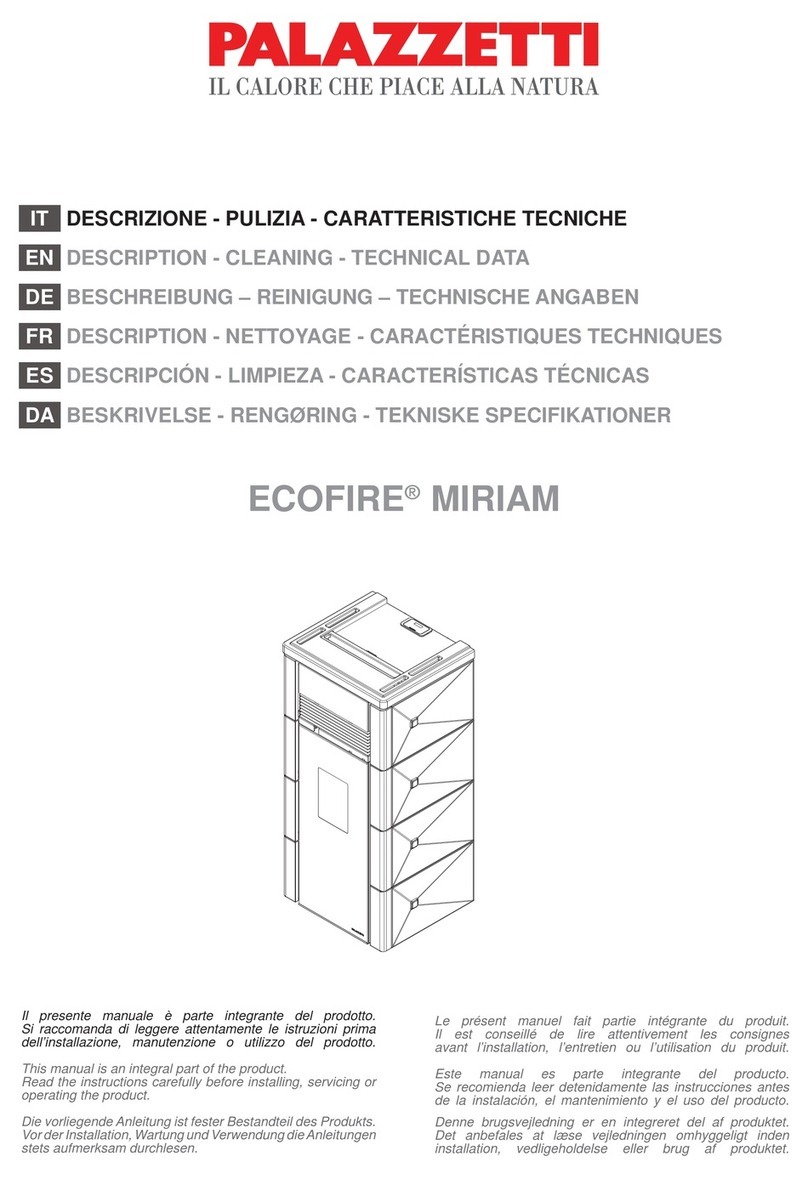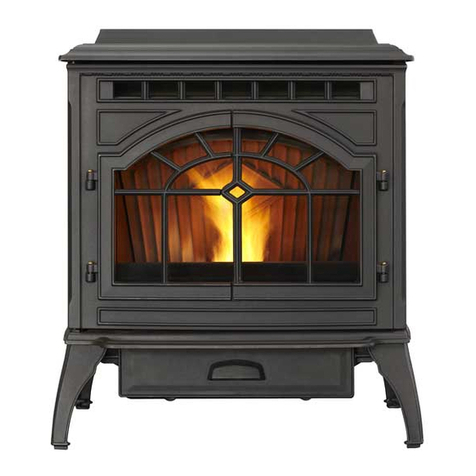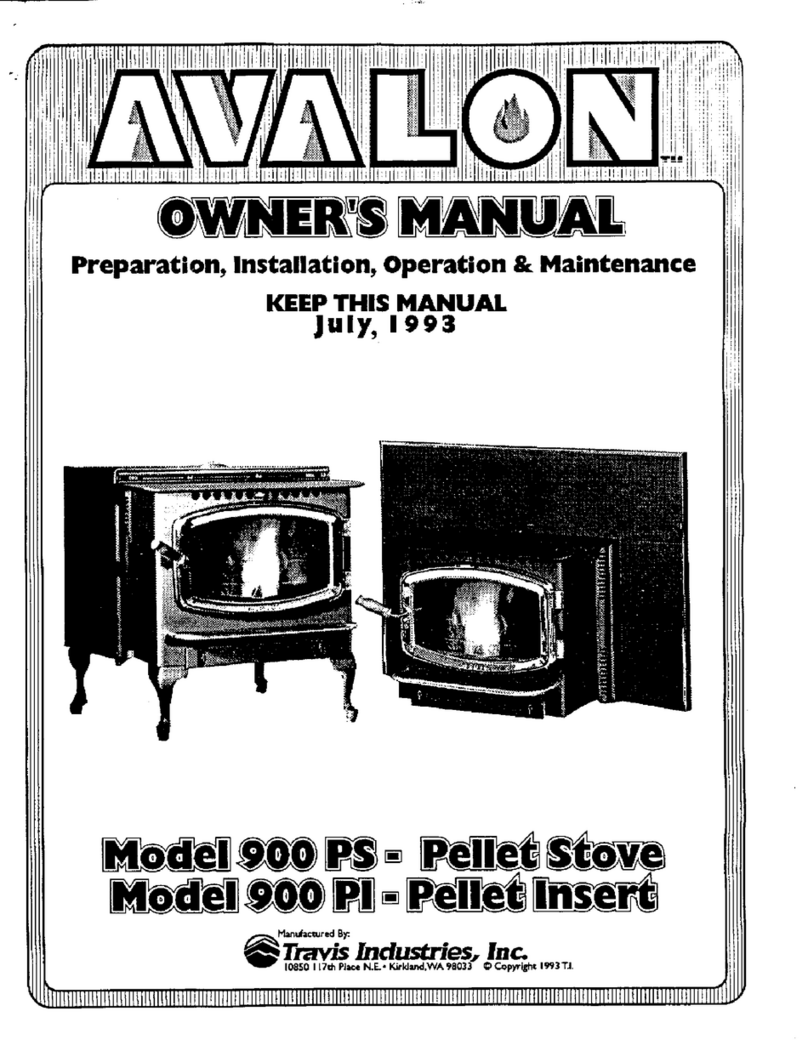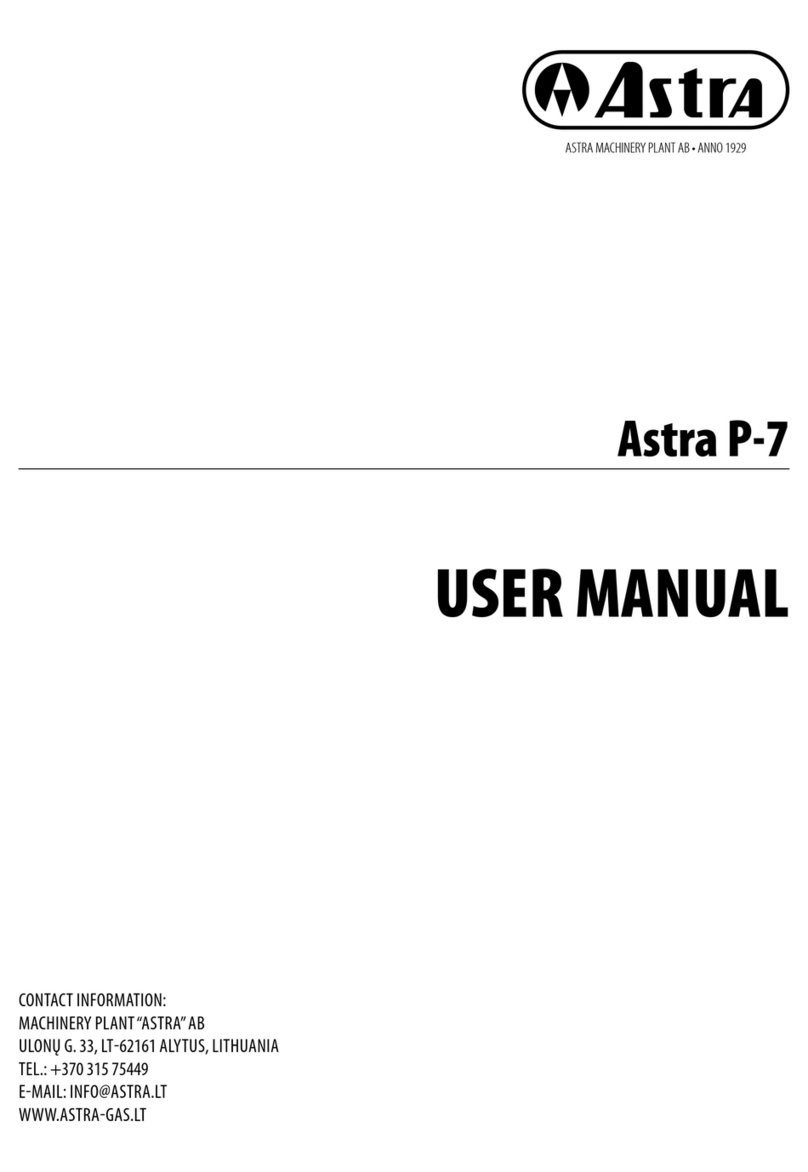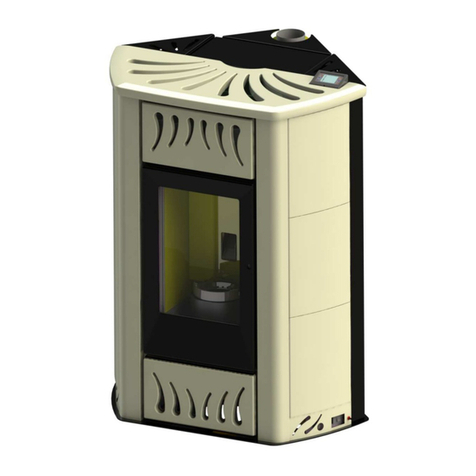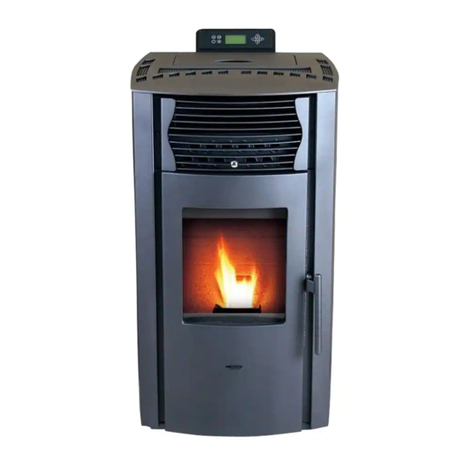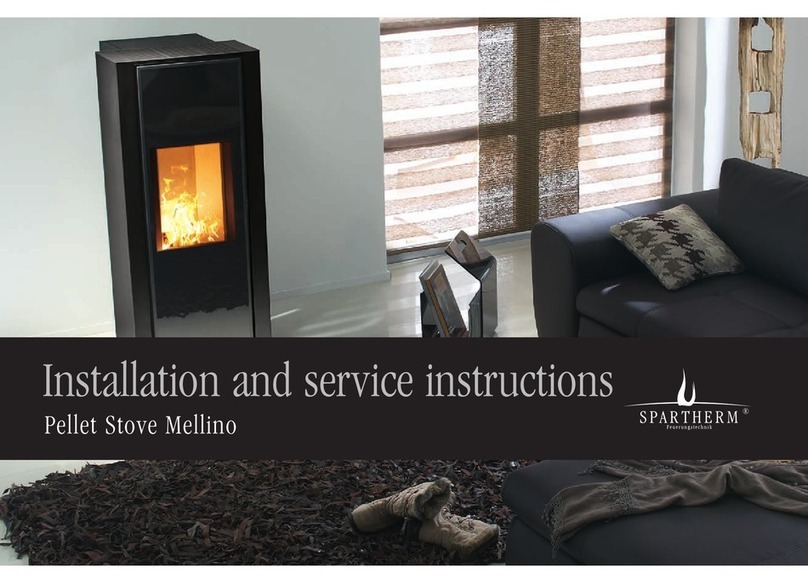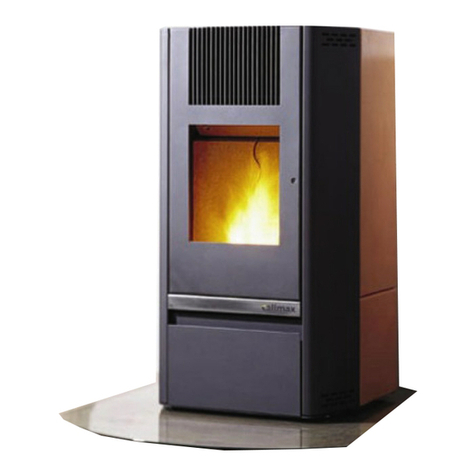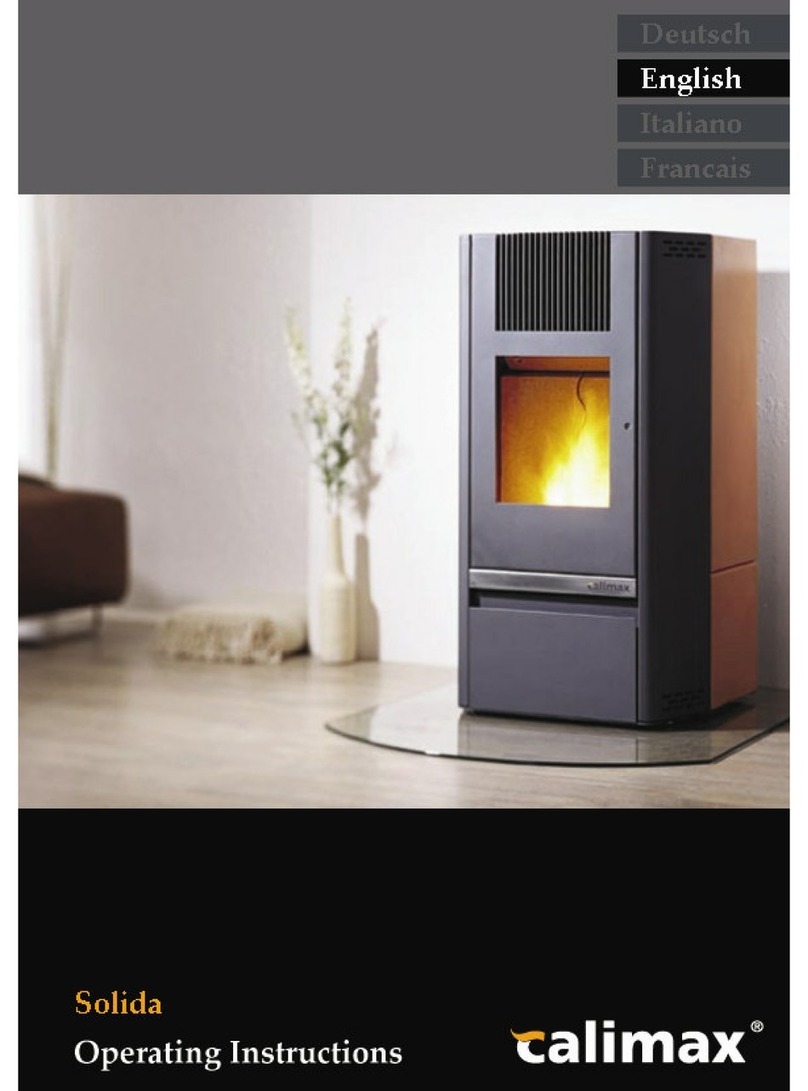1
Table of Contents
1 Preface ............................................................................................................ 2
2 I portant notes ............................................................................................... 2
2.1 Safety ...................................................................................................................................... 2
2.2 Identification ............................................................................................................................ 3
2.3 Liability .................................................................................................................................... 3
2.4 Notes on legal regulations ......................................................................................................... 3
2.5 Stove-related hazards ............................................................................................................... 4
3 Approved fuel................................................................................................... 4
3.1 Storage of pellets...................................................................................................................... 4
4 Construction of the stove .................................................................................. 5
4.1 Standard accessory ................................................................................................................... 5
4.2 Front view ................................................................................................................................ 5
4.3 Rear view ................................................................................................................................. 6
5 Installation....................................................................................................... 7
5.1 Mini u distances ................................................................................................................... 7
5.2 Flue ......................................................................................................................................... 8
5.3 Connecting piece, pellet stove - chi ney.................................................................................... 8
5.4 Co bustion air ......................................................................................................................... 8
5.4.1 Intake fro external source (preferred) ..................................................................................... 8
5.4.2 Intake fro internal source ....................................................................................................... 9
5.5 Flue with air intake syste (AIS) ............................................................................................... 9
5.6 Non-dependence on a bient air ................................................................................................ 9
5.7 Backflow syste ....................................................................................................................... 9
6 Control syste ax3 ...................................................................................... 10
6.1 Operating odes .................................................................................................................... 10
6.2 Overview of user and service enus ........................................................................................ 11
6.3 External require ent............................................................................................................... 12
7 Start-up, operating ode................................................................................ 13
7.1 Filling the pellet bin................................................................................................................. 13
7.2 Functional characteristics of the heating operation.................................................................... 13
7.2.1 Self-test ................................................................................................................................. 13
7.2.2 Starting phase, pre-heating phase ........................................................................................... 13
7.2.3 Heating phase ........................................................................................................................ 13
7.2.4 Cleaning phase ....................................................................................................................... 13
7.2.5 Cool-down phase: ................................................................................................................... 13
7.2.6 Standby.................................................................................................................................. 13
7.3 Heating ode......................................................................................................................... 14
7.4 Perfor ance-regulated heating ode....................................................................................... 14
7.5 Setting date / ti e.................................................................................................................. 15
7.6 Setting ti er switch ................................................................................................................ 15
7.7 External control with internal ti er switch ................................................................................ 16
7.8 Activating the ti er switch ...................................................................................................... 16
7.9 Resetting to factory settings .................................................................................................... 16
8 Cleaning and aintenance .............................................................................. 17
8.1 After 200 kg or 14 days........................................................................................................... 17
8.2 After 800 kg or annually .......................................................................................................... 18
9 Errors - causes - re edies .............................................................................. 20
9.1 Service request....................................................................................................................... 21
10 Technical data................................................................................................ 22
10.1 Di ensions............................................................................................................................. 23
11 Confor ity..................................................................................................... 25
12 Notes............................................................................................................. 27
